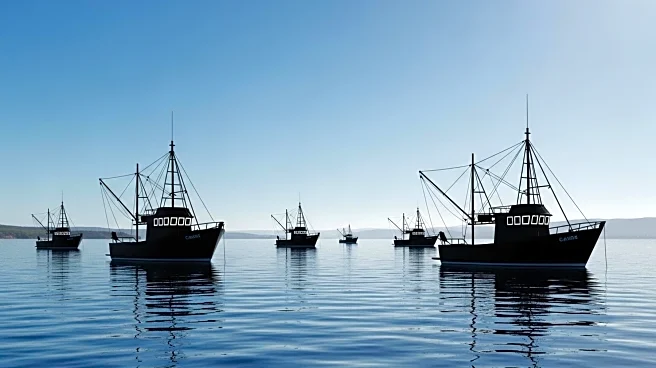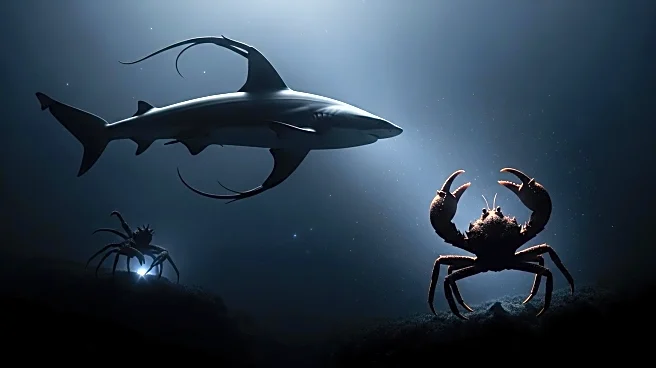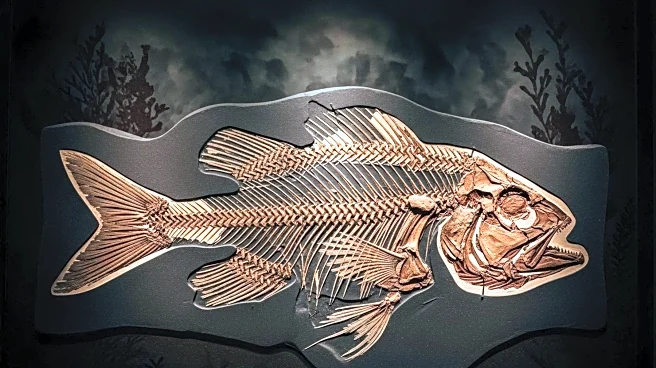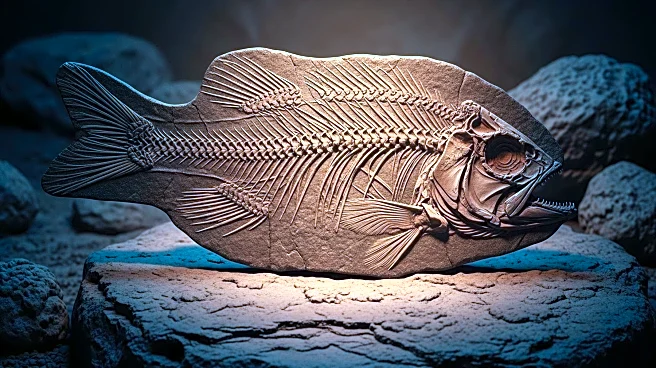What's Happening?
Researchers have identified two new marine species during a CSIRO-led expedition off the coast of Western Australia. The West Australian Lanternshark, Etmopterus westraliensis, was discovered at depths of up to 610 meters in the Gascoyne Marine Park. This small shark, known for its bioluminescence, has large eyes and a slender body with sharp dorsal fins. The second discovery, a porcelain crab named Porcellanella brevidentata, was found along the Ningaloo coast at depths of 122 meters. This crab lives symbiotically with sea pens, soft corals related to sea fans, and is adapted to blend into its host's environment. The expedition, conducted in 2022, has led to the identification of nearly 20 new species, with estimates suggesting up to 600 more species could be described from the collected specimens.
Why It's Important?
These discoveries highlight the rich biodiversity of the deep-sea environments off Australia, which remain largely unexplored. The identification of new species like the lanternshark and porcelain crab underscores the importance of marine biodiversity surveys in understanding ocean ecosystems. Such research can inform conservation efforts and contribute to the sustainable management of marine resources. The findings also demonstrate the potential for scientific collaboration to yield significant insights into marine life, which can have broader implications for ecological studies and environmental policy.
What's Next?
Researchers plan to continue their exploration of deep-sea biodiversity with an upcoming CSIRO-led voyage to the Coral Sea Marine Park. This expedition aims to further uncover new species and expand scientific knowledge of marine ecosystems. The ongoing research efforts are expected to involve collaboration with new partners and researchers, building on the success of previous voyages. These initiatives are crucial for advancing marine science and fostering international cooperation in the study of oceanic biodiversity.
Beyond the Headlines
The discovery of new species in the deep-sea environment raises questions about the ecological roles these organisms play and their adaptations to extreme conditions. Understanding these factors can provide insights into evolutionary processes and the resilience of marine life. Additionally, the findings may have implications for the study of bioluminescence and symbiotic relationships in marine organisms, offering potential applications in biotechnology and environmental monitoring.










